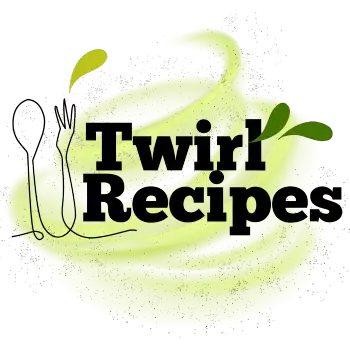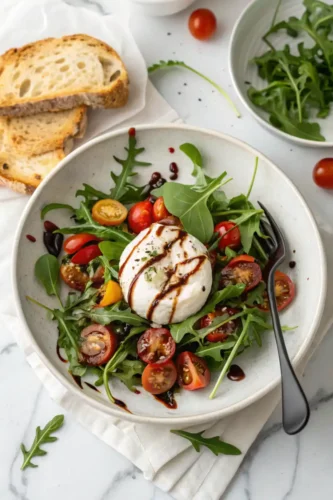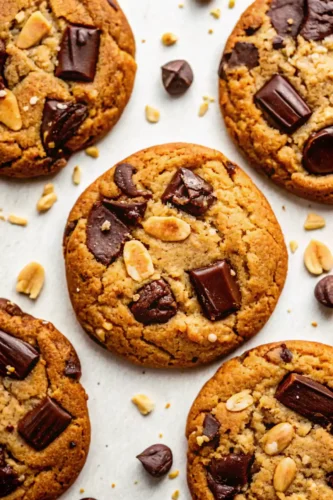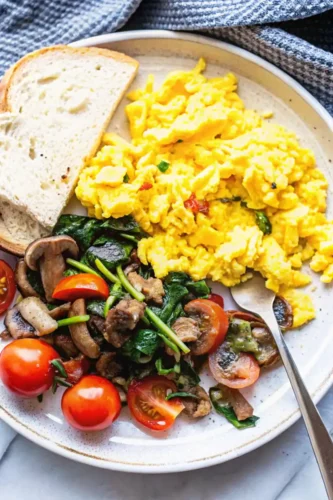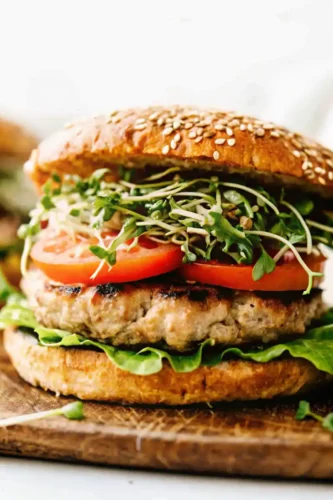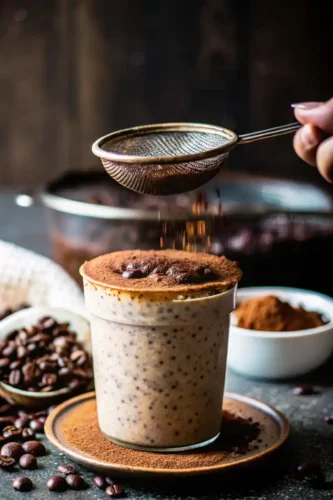Have you ever gazed at a colorful display of macarons and wondered if they’re safe for a gluten-free diet? You’re not alone! These delicate, bite-sized treats are adored worldwide, but for those avoiding gluten, it’s important to ask: “Are macarons gluten free?” The answer is generally yes—when made traditionally, macarons are naturally gluten-free, thanks to their simple and wholesome ingredients.
JUMP TO
- What Are Macarons?
- Are Macarons Gluten Free?
- Health Benefits of Gluten-Free Macarons
- Making Gluten-Free Macarons at Home
- Gluten-Free Macarons in Stores and Bakeries
- Variations of Gluten-Free Macarons
- Storing and Freezing Gluten-Free Macarons
- Conclusion
- FAQs About Gluten-Free Macarons
- Latest Recipes to Inspire Your Next Meal
What Are Macarons?
Macarons, often mistaken for macaroons, are elegant French pastries that have gained immense popularity worldwide. These delicate cookies are made by sandwiching a rich, creamy filling between two light, crisp shells. Their vibrant colors, diverse flavors, and melt-in-your-mouth texture make them a favorite dessert for all occasions.
History and Origins
Tracing their roots back to Italy, macarons made their way to France during the Renaissance. Over time, they became a hallmark of French patisserie, with chefs refining the recipe to create the beloved dessert we know today. Surprisingly, the traditional recipe hasn’t strayed far from its origins, relying on just a few key ingredients that are naturally gluten-free.
The Unique Structure of Macarons
A classic macaron consists of three key components:
- Shells: Made primarily of almond flour, egg whites, and sugar, giving them their signature crisp exterior.
- Filling: Commonly buttercream, ganache, or fruit preserves, providing flavor and moisture.
- Texture: The interplay between the crunchy shell and soft filling is what makes them truly irresistible!
If you’re curious about creating other baked goods, like gluten-free bagels. It’s another great option for those avoiding gluten.
Are Macarons Gluten Free?
The short answer? Yes, traditional macarons are naturally gluten-free! However, there are a few important details to consider to ensure you’re enjoying macarons that are completely safe for a gluten-free lifestyle.
Ingredients in Traditional Macarons
The beauty of macarons lies in their simplicity. Classic recipes rely on a handful of naturally gluten-free ingredients, such as:
- Almond Flour: Made from finely ground almonds, this forms the base of the macaron shell.
- Egg Whites: Whipped into stiff peaks, they give macarons their light and airy texture.
- Powdered Sugar: Helps sweeten the shells while maintaining their delicate structure.
- Granulated Sugar: Stabilizes the egg whites during whipping.
These ingredients are inherently gluten-free, making traditional macarons a celiac-safe dessert option. However, variations and certain processing methods can sometimes introduce gluten into the mix.
When Macarons May Contain Gluten
While classic recipes avoid gluten, flavored or commercially produced macarons can sometimes include gluten-containing ingredients. Here’s what to look out for:
- Fillings: Some fillings, like cookie crumbles or cake batter ganache, may use wheat-based components.
- Flavorings: Artificial flavors or additives in pre-made macarons can occasionally contain traces of gluten.
- Cross-Contamination: In shared kitchens, macarons might be exposed to gluten-containing ingredients, even if the recipe itself is gluten-free.
To avoid these pitfalls, always check for a gluten-free certification on store-bought macarons. If you’re baking at home, choose ingredients from trusted brands to ensure they’re safe for your needs. You can also explore gluten-free puff pastry tips in recipes to expand your gluten-free dessert options.
Health Benefits of Gluten-Free Macarons
Macarons aren’t just visually stunning and delicious—they’re also a fantastic gluten-free dessert option with some unique perks. Whether you’re managing a gluten sensitivity, celiac disease, or simply exploring gluten-free treats, macarons fit the bill perfectly.
Low-Carb and Gluten-Free Diet Compatibility
One of the key benefits of macarons is their reliance on almond flour. Unlike traditional flour, almond flour is naturally gluten-free and packed with nutrients:
- Rich in Healthy Fats: Almond flour supports heart health while adding a buttery texture to macarons.
- Low in Carbs: Perfect for those following a low-carb or keto lifestyle.
- Nutrient-Dense: Provides essential nutrients like vitamin E, magnesium, and fiber.
Thanks to these properties, macarons are an excellent choice for dessert enthusiasts who want something indulgent yet nutritious.
Safe for Celiac Disease and Gluten Sensitivities
For individuals with celiac disease or gluten intolerance, finding safe and delicious desserts can be a challenge. Gluten-free macarons, when prepared in a certified environment, are completely free of wheat or gluten contaminants, making them a dessert you can enjoy without worry.
If you’re on the hunt for more gluten-free baking ideas, try making gluten-free bread crumbs at home. They’re versatile and pair well with savory dishes or snacks.
Making Gluten-Free Macarons at Home
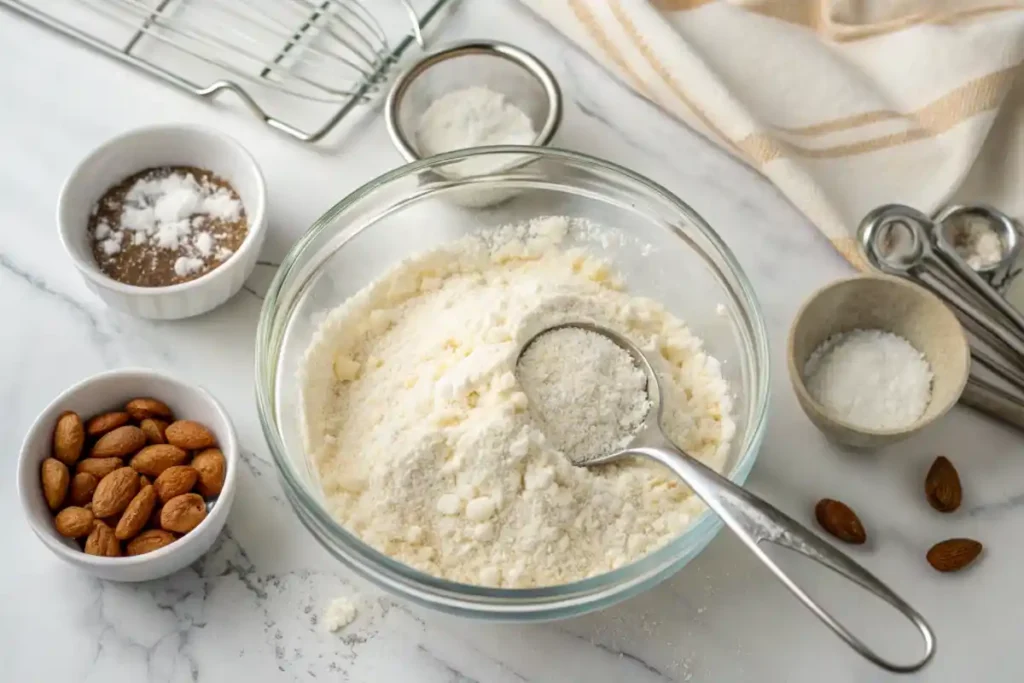
If you’ve ever admired macarons in a bakery display and thought, “I could never make those,” think again! With the right ingredients and a little patience, gluten-free macarons are entirely achievable at home. Plus, they’re a fun way to customize flavors and fillings.
Ingredients Checklist
Before you start, gather these essential gluten-free ingredients:
- Almond Flour (1 ¾ cups): Be sure to use finely ground almond flour for a smooth texture.
- Powdered Sugar (1 ¾ cups): Sifted to remove lumps.
- Egg Whites (3 large): At room temperature for better whipping.
- Granulated Sugar (¼ cup): Helps stabilize the meringue.
- Food Coloring (Optional): For vibrant, bakery-style shells.
- Filling of Your Choice: Buttercream, ganache, or fruit preserves work beautifully.
Step-by-Step Instructions
- Prepare Your Ingredients
- Sift almond flour and powdered sugar together to ensure a smooth, lump-free mixture.
- Separate egg whites and let them sit at room temperature for about 30 minutes.
- Make the Meringue
- Whip the egg whites with a mixer until they form soft peaks. Gradually add granulated sugar, one spoonful at a time, and continue whipping until stiff, glossy peaks form.
- Combine the Dry Ingredients
- Gently fold the almond flour and powdered sugar mixture into the meringue. Use a spatula to fold until the batter flows like lava when dropped from the spatula.
- Pipe the Shells
- Transfer the batter to a piping bag fitted with a round tip. Pipe small circles onto a lined baking sheet, spacing them evenly. Tap the tray gently to release any air bubbles.
- Rest the Batter
- Let the piped shells sit at room temperature for 30–60 minutes until a skin forms. You’ll know they’re ready when you can lightly touch them without the batter sticking to your finger.
- Bake to Perfection
- Preheat the oven to 300°F (150°C). Bake the shells for 15–18 minutes, rotating the tray halfway through. Allow them to cool completely before removing them from the tray.
- Assemble Your Macarons
- Pair similar-sized shells together. Pipe your chosen filling onto one shell and sandwich it with another.
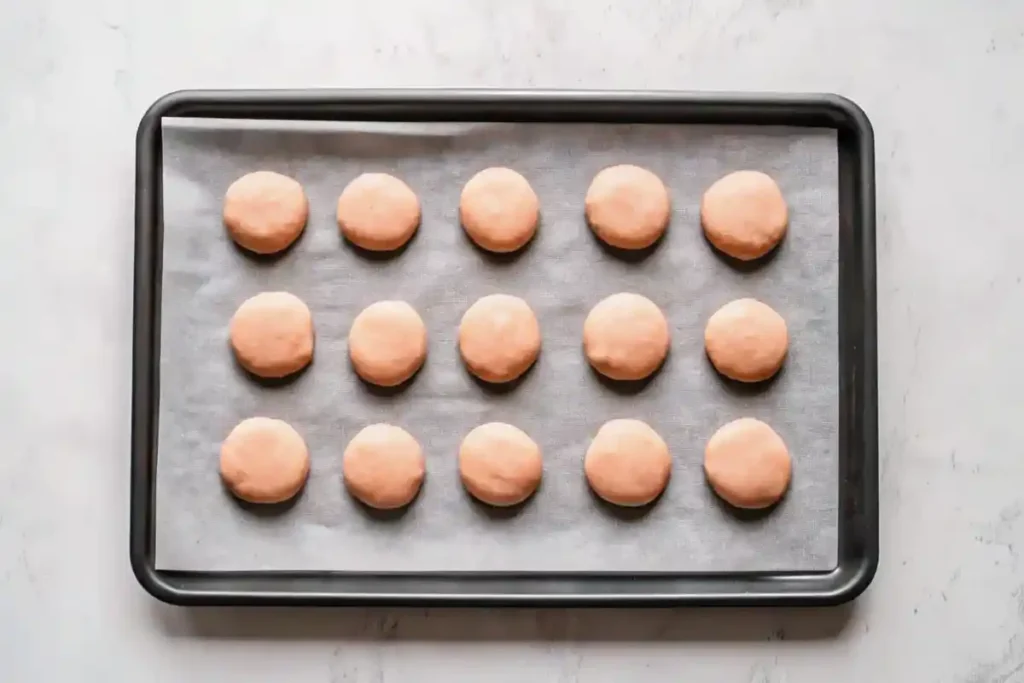
Pro Tips for Success
- Measure Ingredients Precisely: Use a kitchen scale for accuracy, as macarons are sensitive to ratios.
- Avoid Overmixing: Overmixing the batter can result in flat, cracked shells.
- Invest in Parchment Paper or Silicone Mats: These prevent sticking and ensure even baking.
For even more gluten-free inspiration, check out this guide to gluten-free cupcakes—another fun treat to bake at home!
Gluten-Free Macarons in Stores and Bakeries
Not ready to bake your own macarons? No problem! You can find gluten-free macarons in many bakeries and stores, but knowing what to look for is key.
How to Check for Gluten-Free Certification
When buying macarons, here are a few tips to ensure they’re truly gluten-free:
- Certified Gluten-Free Label: Look for official certifications on packaging or menus. This indicates the macarons were made in a facility that avoids cross-contamination.
- Ingredient List: Carefully review the ingredients for any wheat, barley, or rye derivatives. Be cautious of flavored fillings or decorations that might include gluten.
- Ask Questions: At bakeries, don’t hesitate to ask about their preparation methods. Some bakeries specialize in gluten-free options, while others may share equipment with gluten-containing products.
Popular Gluten-Free Macaron Brands
Certain brands and bakeries are known for their gluten-free macarons. Here are a few worth trying:
- Ladurée: The iconic French patisserie offers gluten-free options for most of its classic macarons.
- Dana’s Bakery: A U.S.-based brand that specializes in gluten-free and unique flavored macarons.
- Local Gluten-Free Bakeries: Many local bakeries cater to gluten-free needs, so explore nearby options for freshly made treats.
Why Shop Local?
Supporting local bakeries not only ensures freshness but also allows you to ask directly about preparation practices. Additionally, many smaller bakeries use simple, traditional recipes, making their macarons more likely to be gluten-free.
Variations of Gluten-Free Macarons
One of the best things about macarons is their versatility. Whether you prefer classic flavors or bold, creative combinations, gluten-free macarons can cater to any palate. Let’s explore some delicious ways to customize these delicate treats.
Flavors to Try
The variety of macaron flavors is almost endless. Here are some popular gluten-free options:
- Vanilla Bean: Simple yet sophisticated, this flavor pairs well with tea or coffee.
- Salted Caramel: A blend of sweet and salty for a perfect balance.
- Pistachio: Nutty and rich, made even more delicious with finely ground pistachios.
- Raspberry: Tangy fruit preserves add a refreshing twist.
- Matcha Green Tea: Earthy and vibrant, ideal for adventurous eaters.
To take your macarons to the next level, consider pairing them with a warm cup of green tea with matcha for a delightful treat.
Creative Gluten-Free Fillings
While traditional fillings like buttercream and ganache are always a hit, why not get a little creative? Here are some ideas:
- Lemon Curd: Bright and zesty for citrus lovers.
- Coconut Cream: Light and tropical, perfect for summer-themed desserts.
- Peanut Butter Ganache: A rich, nutty alternative that complements almond shells.
- Jam Blends: Combine multiple fruit preserves, such as strawberry and apricot, for a layered flavor profile.
Customizing Colors and Shapes
Macarons don’t have to be limited to standard round shapes. Using themed piping templates, you can create hearts, stars, or even seasonal shapes like snowflakes. Add food coloring to match occasions or celebrations. For example:
- Pastels for spring holidays.
- Deep reds and golds for festive seasons.
- Bright yellows and oranges for summer parties.
Storing and Freezing Gluten-Free Macarons
Macarons may be delicate, but with proper storage, you can keep these gluten-free treats fresh and flavorful for days—or even weeks! Whether you’re planning to enjoy them soon or save them for later, these tips will help maintain their texture and taste.
How to Store Fresh Macarons
To ensure your macarons stay crisp on the outside and soft on the inside:
- Use an Airtight Container: Place macarons in a single layer inside an airtight container to prevent them from drying out.
- Refrigerate for Short-Term Storage: Macarons stay fresh for up to 4–5 days in the refrigerator. Separate layers with parchment paper to avoid sticking.
- Bring to Room Temperature Before Serving: Cold macarons might lose their delicate texture. Let them sit at room temperature for 20–30 minutes before eating.
Freezing Macarons for Longevity
If you’ve made a large batch or want to prepare macarons in advance, freezing is an excellent option:
- Freeze the Shells Separately: Place unfilled macaron shells in a freezer-safe container, layering them with parchment paper. This prevents them from sticking or breaking.
- Assemble After Freezing: Thaw shells at room temperature before adding your favorite fillings. This keeps the filling fresh and ensures the shells don’t soften too much during defrosting.
- Freeze Fully Assembled Macarons: If you’ve already filled the macarons, wrap them individually in plastic wrap and store them in an airtight container. They can last up to 2 months in the freezer.
Pro Tips for Best Results
- Avoid Excess Moisture: Moist environments can ruin the crispness of the macaron shells.
- Label and Date Containers: This helps you track freshness if you’re storing multiple batches.
Conclusion
Macarons are a delightful example of how a classic dessert can align with a gluten-free lifestyle. Their naturally gluten-free ingredients make them a safe and satisfying treat for those avoiding gluten. Whether you enjoy them in their traditional form or explore creative variations, macarons offer an indulgent yet elegant experience.
With endless flavor possibilities and the option to make them at home, gluten-free macarons prove that dietary restrictions don’t have to limit your ability to enjoy something sweet and special. Treat yourself to these beautiful confections and savor the joy they bring!
FAQs About Gluten-Free Macarons
Are coconut macaroons gluten-free?
Coconut macaroons and French macarons are often confused due to their similar names, but they are quite different. Coconut macaroons are typically made with shredded coconut, sweetened condensed milk, and egg whites—ingredients that are naturally gluten-free. However, as with any dessert, cross-contamination or added ingredients (like flavorings) may introduce gluten. Always check the ingredient list or opt for certified gluten-free coconut macaroons if you’re sensitive to gluten.
Are macarons dairy-free?
Traditional macaron shells are naturally dairy-free, as they are made with almond flour, egg whites, and sugar. However, fillings like buttercream and ganache often contain dairy. To make dairy-free macarons, opt for fillings such as coconut cream, dairy-free chocolate ganache, or fruit preserves. Be sure to check store-bought macarons carefully, as many include dairy in their recipes.
How unhealthy is a macaron?
Macarons are an indulgence but are not as unhealthy as some other desserts. Each macaron is relatively small and contains about 70–100 calories, depending on the flavor and filling. They’re lower in fat compared to butter-laden pastries and are naturally gluten-free, making them a lighter choice. However, they do contain sugar, so moderation is key. For a healthier option, consider reducing sugar or experimenting with alternative fillings like low-sugar fruit preserves.
